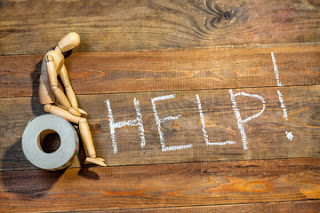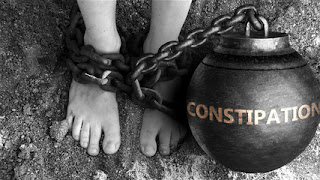Life Without Bread
For so many individuals bread is not only a daily habit, it shows up at almost every meal. Subs, sandwiches, wraps, crackers, bagels, cereal, pizza and pasta are an unfortunate addition to the daily diet and are a significant contribution to the obesity epidemic today.
With a high percentage of the population suffering from gluten sensitivities we would all benefit from minimizing, or even better, eliminating bread products from our diet. If you suffer from bloating and allergies, I would venture to bet that if you eliminated all bread products for two weeks, you would feel dramatically better in a variety of ways.
First off, you may notice that chronic sinus condition that you blame on the trees, pollen and hay fever will begin to fade away and you may even forget to take your medications. Those suffering from fibromyalgia and brain fog could also see improvement. Next, that extra two inches on the waist will melt off and you won’t likely feel bloated after meals and need to undo that top button. These are external things you will notice.
Internally, your digestive tract that was likely to be gummed up on a regular basis is now freer flowing. Foods will be broken down with greater ease and the nutrients from the healthy, well chewed foods are able to be absorbed with improved delivery of essential vitamins and minerals. Natural fiber intake of more fruits and vegetables will have a broom-like effect on the colon, helping many who suffer with chronic constipation and help to improve over-all health.
I’ve actually had people ask me what do I eat if I don’t eat bread. Really? Anyone who knows or works with me knows I usually have fresh produce or one of a variety of salads that I make. Sometimes I use Romaine lettuce leaves as a wrap for tuna, quinoa or egg salads. For dinner, fish, chicken or beef with a vegetable and salad fills me up. Preparation is key as I cannot leave the hospital and don’t leave my office to go to lunch. If I can do it — anyone can. Your shopping list is likely to change and in order to eat fresh you will be shopping more frequently in smaller amounts.
I feel that the food pyramid fails us when it comes to staying healthy and avoiding obesity. Six to twelve servings of grains were the recommended amount. I’d feel like a cow — no thank you!
Michelle Obama recently changed the food pyramid to “MyPlate”. The plate is split into four sections, for fruit, vegetables, grains and protein. A smaller circle sits beside it for dairy products. While this may be an improvement over the food pyramid, it needs to be more specific and in my opinion — eliminate the dairy.
Restricting carbohydrates is not the goal. We absolutely need carbohydrates to function properly and maintain adequate energy levels throughout the day. The healthiest carbohydrates are those found in nature. Fruits, vegetables and beans (legumes) are excellent carbohydrate choices. Healthy, gluten-free, whole grains such as steel-cut oats, quinoa, millet and rice make excellent additions to salads as well as side-dishes for main meals. There are so many easy and delicious recipes available at your fingertips via the internet. For those not on-line, the library will likely have recipe books for gluten free living.
The downside of life without bread will likely be the cost of a new wardrobe and your waist size is likely to shrink as a result of sticking with this. For those of you with gluten sensitivities, the longer you eliminate wheat products completely, the more likely that they won’t be bothersome on a rare occasion. Minimally six months is needed to make your body less reactive. You may, however feel so much better that you do not want to add them back into your diet.
If nothing else, please become more conscious of how much bread you are consuming. I am sure you will be surprised. Give your body the benefit of bread-free living and see how good you can feel.
With a high percentage of the population suffering from gluten sensitivities we would all benefit from minimizing, or even better, eliminating bread products from our diet. If you suffer from bloating and allergies, I would venture to bet that if you eliminated all bread products for two weeks, you would feel dramatically better in a variety of ways.
First off, you may notice that chronic sinus condition that you blame on the trees, pollen and hay fever will begin to fade away and you may even forget to take your medications. Those suffering from fibromyalgia and brain fog could also see improvement. Next, that extra two inches on the waist will melt off and you won’t likely feel bloated after meals and need to undo that top button. These are external things you will notice.
Internally, your digestive tract that was likely to be gummed up on a regular basis is now freer flowing. Foods will be broken down with greater ease and the nutrients from the healthy, well chewed foods are able to be absorbed with improved delivery of essential vitamins and minerals. Natural fiber intake of more fruits and vegetables will have a broom-like effect on the colon, helping many who suffer with chronic constipation and help to improve over-all health.
I’ve actually had people ask me what do I eat if I don’t eat bread. Really? Anyone who knows or works with me knows I usually have fresh produce or one of a variety of salads that I make. Sometimes I use Romaine lettuce leaves as a wrap for tuna, quinoa or egg salads. For dinner, fish, chicken or beef with a vegetable and salad fills me up. Preparation is key as I cannot leave the hospital and don’t leave my office to go to lunch. If I can do it — anyone can. Your shopping list is likely to change and in order to eat fresh you will be shopping more frequently in smaller amounts.
I feel that the food pyramid fails us when it comes to staying healthy and avoiding obesity. Six to twelve servings of grains were the recommended amount. I’d feel like a cow — no thank you!
Michelle Obama recently changed the food pyramid to “MyPlate”. The plate is split into four sections, for fruit, vegetables, grains and protein. A smaller circle sits beside it for dairy products. While this may be an improvement over the food pyramid, it needs to be more specific and in my opinion — eliminate the dairy.
Restricting carbohydrates is not the goal. We absolutely need carbohydrates to function properly and maintain adequate energy levels throughout the day. The healthiest carbohydrates are those found in nature. Fruits, vegetables and beans (legumes) are excellent carbohydrate choices. Healthy, gluten-free, whole grains such as steel-cut oats, quinoa, millet and rice make excellent additions to salads as well as side-dishes for main meals. There are so many easy and delicious recipes available at your fingertips via the internet. For those not on-line, the library will likely have recipe books for gluten free living.
The downside of life without bread will likely be the cost of a new wardrobe and your waist size is likely to shrink as a result of sticking with this. For those of you with gluten sensitivities, the longer you eliminate wheat products completely, the more likely that they won’t be bothersome on a rare occasion. Minimally six months is needed to make your body less reactive. You may, however feel so much better that you do not want to add them back into your diet.
If nothing else, please become more conscious of how much bread you are consuming. I am sure you will be surprised. Give your body the benefit of bread-free living and see how good you can feel.



Comments
Post a Comment